Bamboo is a giant woody ‘grass’ native to the tropics but brought to UK gardens for ornamental purposes. The plant predominantly reproduces itself by vegetative propagation; sending new growth out just under the surface of the soil in the form of rhizomes. These bamboo rhizomes are important for the successful cultivation of the plant. However, an understanding is also required when considering how to manage bamboo. Knowing whether the bamboo in your garden is a clumping variety, or one that propagates quickly via running bamboo rhizomes, is crucial for controlling the spread of bamboo.

Running (monpodial) bamboo rhizome
The formation of the rhizome structure is the main classifier used to group bamboo species. The type of rhizome growth displayed by the bamboo determines the distribution of bamboo stems above ground. Some bamboo, such as the popular black bamboo, is a running variety but given UK climate and conditions can initially form clumping bamboo rhizomes. Later, often once the plant becomes well established, it will send out runners to establish new culms (the above ground canes). The differences between these rhizome growth habits and what they mean for plant care are explained in this article.
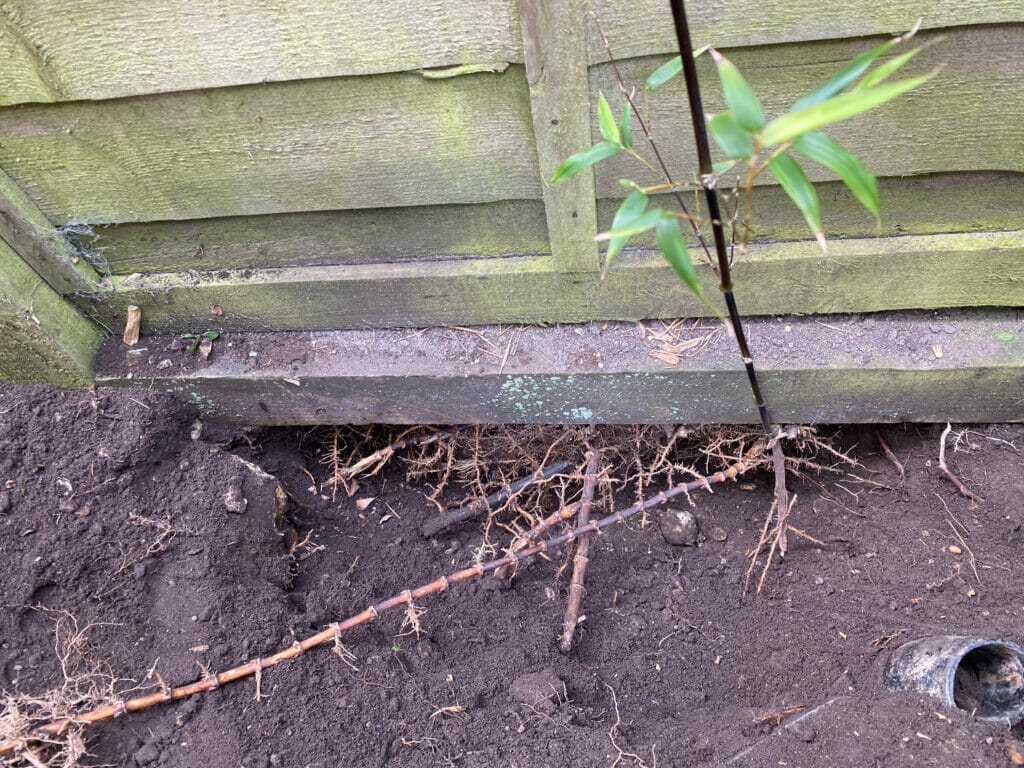
Black bamboo rhizomes extending from a neighbouring garden
What are bamboo rhizomes?
Bamboo rhizomes are underground stem structures found in bamboo plants (Bambusoideae family). They are a type of modified stem that serves multiple purposes in the growth and spread of bamboo.
Bamboo rhizomes are responsible for:
1. Vegetative Propagation:
The rhizomes play a vital role in the spread and reproduction of bamboo plants. They are horizontally growing underground stems that produce buds capable of developing into new bamboo shoots. As the rhizomes spread, they give rise to new shoots, enabling the bamboo to expand its territory.
2. Nutrient Storage:
Rhizomes also act as storage organs for the bamboo plant. They store starches, sugars, and other nutrients, which can be used during periods of limited above-ground growth. This helps bamboo to survive unfavourable conditions and then later to fuel the growth of new shoots.
3. Structural Support:
Bamboo rhizomes also function as the primary support system for the above-ground bamboo shoots. They provide stability to the plant and allow it to grow upright, even in dense clumps or at tall heights.
Understanding rhizome types
Bamboo are categorised into groups based on what kind of rhizome growth habit they exhibit. Monopodial (running bamboo), Sympodial (clumping bamboo) and Mixpodial (both clumping and running).
Clumping bamboo rhizomes
Sympodial varieties, also referred to as pachymorph, are split into two sub-groups:
- sympodial-tufted
- Sympodial-scattered
Sympodial-tufted bamboo, is true clumping bamboo, which maintains tight clusters of growth from short-necked, u-shaped rhizomes. Each of these rhizomes turns upwards to form a culm and also produces an axillary bud from culm base which is the start of the next shoot. This method of growth limits how fast these varieties can spread. For this reason, varieties with clumping bamboo rhizomes are more desirable for smaller gardens.
Sympodial-scattered bamboo, also known as an ‘open clumper’. These possess longer petioles than the tufted variety, often referred to as long-necked rhizome, the result being more scattered culms. Capable of extending rhizome out up to a metre from the mother clump, before forming another cluster. The surface growth habits of sympodial-scattered bamboo can appear similar to that of running bamboo, which is why identifying the rhizomes is important.
Running bamboo rhizomes
The second type of bamboo is called monopodial, or running bamboo. Running bamboo rhizomes extend out horizontally underground for long distances. Unlike the false rhizome of the open clumpers, the running bamboo rhizome has a growth bud at every node. These buds can develop into either another rhizome or a new stem. Stems from this type of bamboo emerge in a scattered but fairly linear pattern from the mother plant. New shoots will emerge along the length of the underground rhizomes, unlike with sympodial rhizomes that lead to dense clumps.
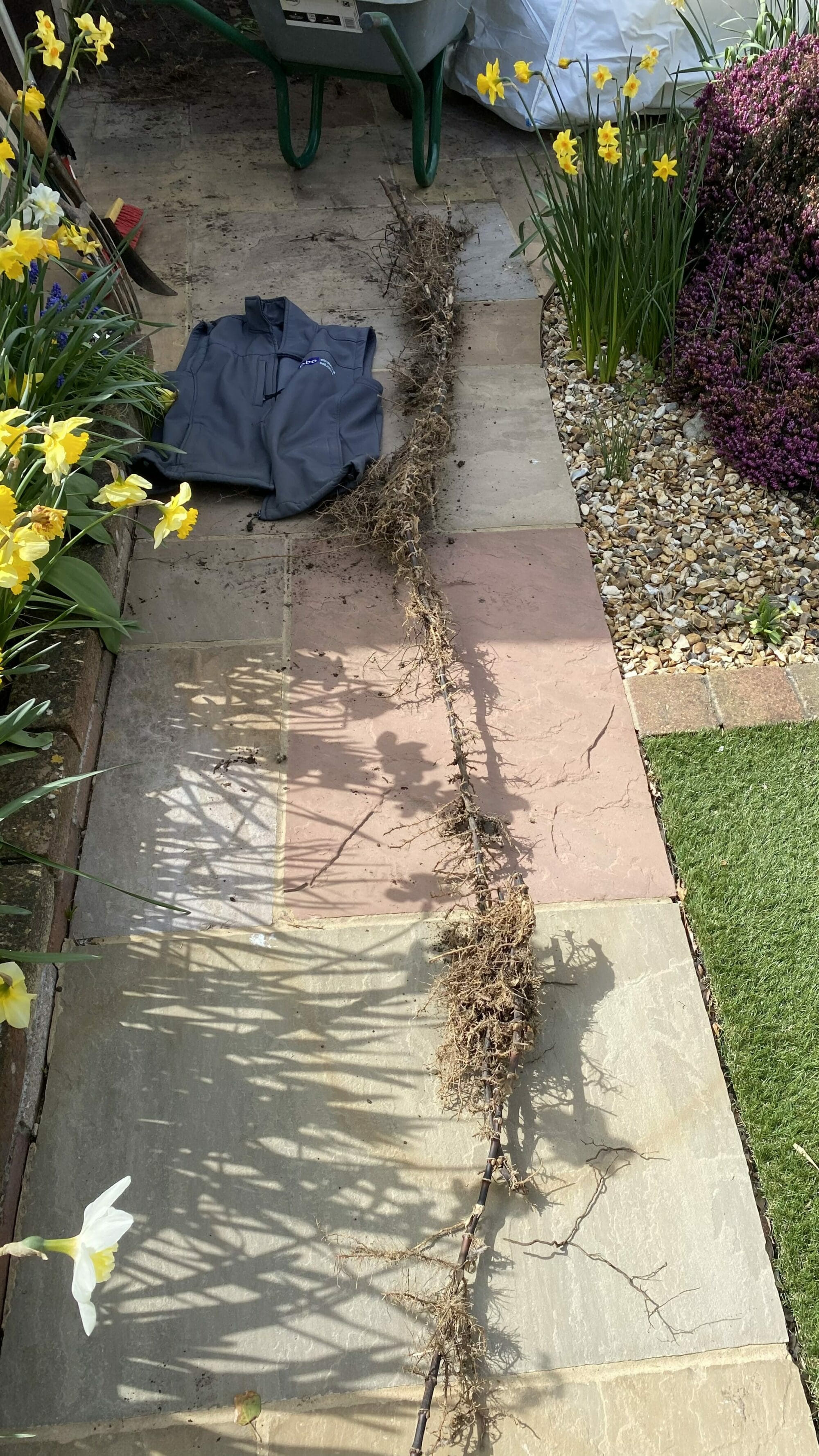
An example of the lengths that can be achieved by running bamboo rhizome
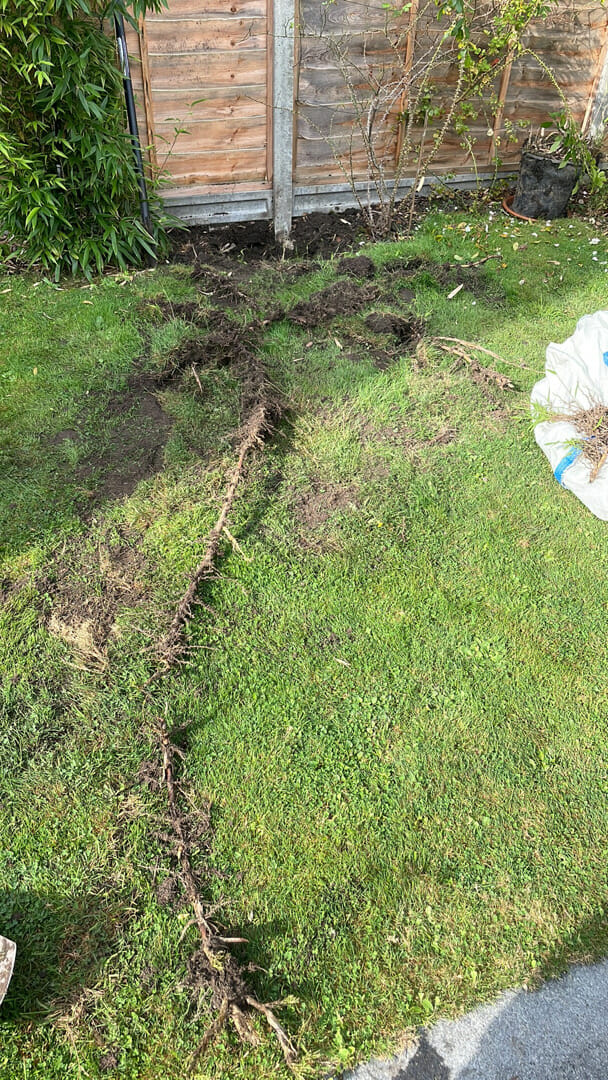
Running rhizome removed from a shallow depth in lawn of a residential garden
Type identification is complicated by running varieties that display growth habits like clump forming bamboo. This can happen when the bamboo suffers conditions unfavourable to its development. Black bamboo is an example of running bamboo that exhibits phenomenally vigorous growth in its natural habitat. Spreading tall culms rapidly outwards from the mother plant to colonise more space. However, when planted in conditions unlike its native environment it can end up looking like a clumping bamboo due to stressors. An example being UK drought conditions, which could prevent the plant from expending energy for rhizome production.
Later, should conditions become more favourable, there is a risk that this popular garden ornamental can develop an aggressive growth habit. Black bamboo rhizomes can each spread up to 15ft away from the main plant and have no consideration for property boundaries. It is therefore wise to restrict the possibility of rhizome growth outside of the desired area by installing a bamboo root barrier.
Need help with running bamboo rhizomes?
Find out more about our bamboo removal and control services.
Mixpodial Bamboo
This third type of bamboo possesses a combination of traits that make their rhizomes different again. Mixpodial bamboo form axillary buds on the stem base of the plant which develop into rhizomes instead of stems, as is the case with the sympodial variety. However, they also extend horizontally underground like monopodial types. In this instance, axillary buds form in tandem on the rhizome and new stem bases. The buds on the stem bases develop into shoots that will go on to establish a new stem. At the same time, axillary buds on these new stem bases develop into shoots and start to form dense bamboo brush. Aerially this creates a growth habit that looks like a mixture of sympodial-scattered and monopodial growth.
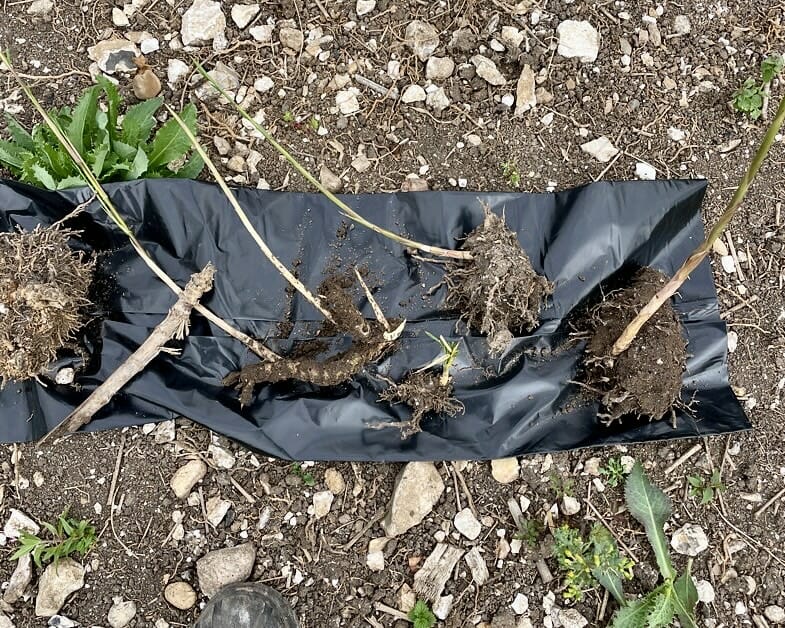
Examples of running (monopodial) bamboo rhizome (left) and u-shaped clumping (sympodial) bamboo rhizome and roots
Bamboo rhizome depth
While bamboo root systems can extend to a depth of approximately 60 to 90 cm, most bamboo typically roots to only 30-40 cm. Bamboo rhizomes are usually found no deeper than 20-30cm, traversing horizontally away from the plant through the surface of the surrounding soil. The rhizomes of running bamboo, such as Black bamboo, can extend a great distance away from the mother plant, especially when the site is moist and well drained. Bamboo requires a lot of water to achieve the great heights of growth they manage in their native climes. When water or nutrients are restricted, the rhizomes will make less progress away from the mother plant. Clumping bamboo rhizomes will be found directly beneath the tuft of culms in the surface layers of soil, with the sympodial-scattered varieties sending rhizomes out to about a metre horizontally, shallowly below the soil surface.
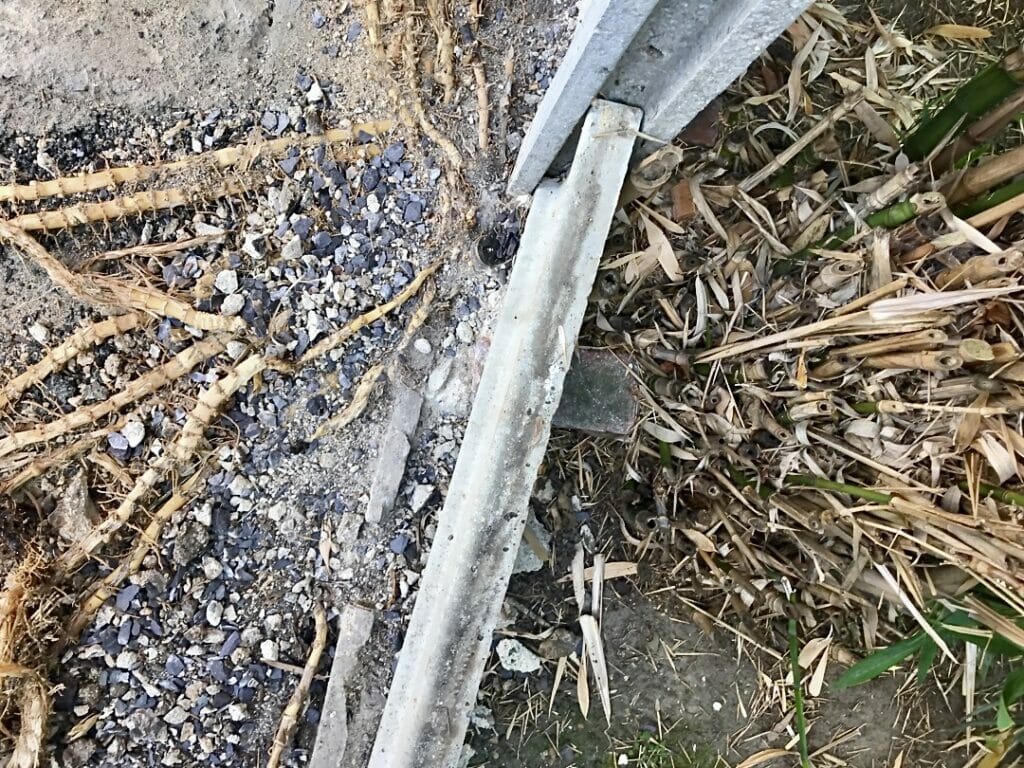
Displaying the shallow depth at which running bamboo rhizome is often found
The means of bamboo propagation
Bamboo rhizome propagation is important for the spread of the plant, as it relies on vegetative propagation over the rarer method of seed production for reproduction. When bamboo becomes a problem in UK gardens it is usually because this non-native species has become too invasive for the space available. It is essential to remove rhizomatous growth that will spread the plant stems outside of the desired area of the garden you wish to contain it in.
Should you suddenly find yourself with running black bamboo you thought to be clumping, containment with a bamboo root barrier is an option. Removing or blocking the rhizomes from spreading is essential for the control of bamboo, as this is the method it relies on for propagation when conditions are favourable. Some gardeners choose to have the plant removed to avoid the issue all together, opting to replace running bamboo varieties with one that is specifically a type with clumping rhizomes.
Are you concerned about running bamboo or clumping bamboo rhizomes at your property? Call 0203 174 2187 or 01202 816134 to speak to a member of our team, who can advise on removal and containment solutions.
All images © 2023 PBA Solutions

